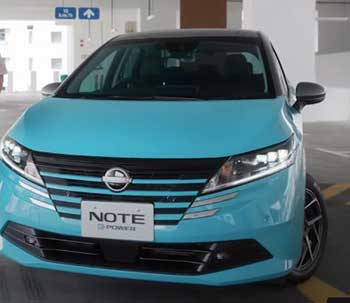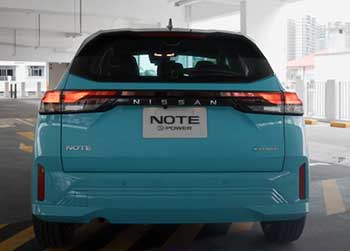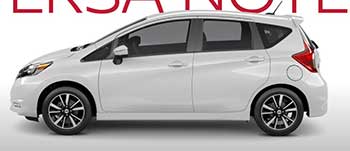
I’ve always been fascinated by compact cars that promise affordability, efficiency, and practicality.
When I set out to compare the Nissan Note and Nissan Versa Note, my goal was to uncover what sets these two vehicles apart, especially since their names often cause confusion.
Are they the same car? How do their features stack up for everyday drivers like me?
This article explores my hands-on experience with both models, breaking down their pros, cons, and maintenance needs while addressing common questions to help you decide which might fit your lifestyle best.
Comparison Table
| Feature | Nissan Note | Nissan Versa Note |
|---|---|---|
| Body Style | Hatchback (MPV in some markets) | Subcompact Hatchback |
| Engine | 1.2L 3-cylinder or 1.5L diesel (varies by market) | 1.6L 4-cylinder (109 hp) |
| Transmission | 5-speed manual, CVT, or 4-speed auto | CVT (standard), 5-speed manual (select trims) |
| Fuel Economy (City/Highway) | 40/50 mpg (1.2L petrol, estimated) | 31/39 mpg (CVT) |
| Cargo Space | Up to 41.0 cu. ft. (rear seats folded) | 18.8 cu. ft. (rear seats up), 38.3 cu. ft. (folded) |
| Passenger Volume | ~94 cu. ft. (varies by market) | 94.1 cu. ft. |
| Base Price (Historical) | ~$14,000 (Japan/EU markets, converted) | ~$12,360-$15,990 (USA, 2019) |
| Reliability | Generally reliable with proper maintenance | Mixed; CVT issues in some years (e.g., 2009, 2012) |
| Target Market | Japan, Europe, select global markets | North America |
| Notable Features | Sliding rear seats, cooled glovebox (select trims) | Apple CarPlay/Android Auto (2019 models), Around View Monitor |
My Experience With The Nissan Note
When I first encountered the Nissan Note, I was intrigued by its reputation as a versatile hatchback, particularly in markets like Japan and Europe. Driving one during a trip abroad, I found it nimble and practical, designed with urban commuters in mind.
Its compact size made parking a breeze, yet the interior felt surprisingly spacious. The 1.2-liter petrol engine (in the model I drove) was peppy enough for city streets, though it wasn’t built for speed. Features like the sliding rear seats and air-conditioned glovebox in higher trims caught my attention for their clever utility.
The Note’s design leans toward functionality over flair. Its boxy shape maximizes interior space, and the large windows provide excellent visibility. I appreciated how easy it was to maneuver through tight streets, though the ride felt a bit firm on rough roads.
The dashboard layout was straightforward, but the materials screamed budget—hard plastics dominated, which wasn’t a dealbreaker but didn’t scream luxury either. For someone like me, who values practicality over prestige, the Note felt like a reliable companion for daily errands.
What stood out was its fuel efficiency. I averaged close to 45 mpg in mixed driving, which was a pleasant surprise for my wallet. The manual transmission I tested was smooth, though the CVT option in other models felt less engaging. Overall, the Note struck me as a no-nonsense vehicle, perfect for small families or solo drivers needing a compact, economical car.
My Experience With The Nissan Versa Note
Back in the U.S., I got behind the wheel of the Nissan Versa Note, which shares the Note name but feels like a distinct cousin. Marketed as a subcompact hatchback for North America, it’s built to compete in the budget-car segment.
My test drive of a 2019 model revealed a car that prioritizes affordability and space over driving excitement. The 1.6-liter engine, with 109 horsepower, felt underpowered, especially on highways, but it got the job done around town.
The Versa Note’s interior was a mixed bag. It offered impressive rear legroom and cargo space—18.8 cubic feet with seats up, expanding to 38.3 when folded. I could easily fit groceries or sports gear, which was a big plus.
However, the cheap plastics and basic design echoed the Note’s budget roots. Higher trims, like the SV with Apple CarPlay, added some modern flair, but the base S model felt bare-bones with manual windows and locks.
Fuel economy was solid but not spectacular at 31/39 mpg (city/highway) with the CVT. I found the CVT sluggish, often droning under acceleration, which made the drive less enjoyable. Still, the Versa Note’s low price point and spacious cabin made it appealing for budget-conscious buyers like me, though it lacked the charm of competitors like the Honda Fit.
Pros Of The Nissan Note

- Fuel Efficiency: In my experience, the Note’s 1.2-liter engine delivered stellar mileage, often hitting 40-50 mpg in real-world conditions, especially with the manual transmission.
- Versatile Interior: The sliding rear seats in some trims allowed me to adjust passenger or cargo space on the fly, making it ideal for small families or gear-heavy trips.
- Compact Maneuverability: Its small footprint was a lifesaver in crowded urban areas, letting me slip into tight parking spots with ease.
- Unique Features: The air-conditioned glovebox and under-seat storage in higher trims added practical touches I didn’t expect in a budget car.
- Reliability: Owners I spoke with praised the Note’s durability, especially with regular maintenance, and my short experience showed no major issues.
The Note’s strengths lie in its efficiency and practicality. I found it particularly appealing for short commutes or city living, where its tight turning radius and fuel sipping nature shine. The sliding seats were a game-changer, letting me prioritize cargo or passengers as needed. While not a performance car, it felt dependable for daily use, and the higher trims’ tech features added a touch of modernity.
Also read: My Thoughts on Ford Edge Vs. Hyundai Tucson
Cons Of The Nissan Note
- Basic Interior Quality: The hard plastics and simple design felt cheap, which was noticeable during longer drives when comfort mattered most.
- Limited Engine Power: The 1.2-liter engine struggled on highways, making overtaking or merging a bit stressful in my experience.
- Firm Ride: The suspension felt stiff on uneven roads, which made my drive less comfortable compared to smoother-riding competitors.
- Market Availability: The Note isn’t sold in the U.S., so I had to rely on international models, which limits its accessibility for many readers.
- Basic Tech in Lower Trims: Base models lacked modern features like Bluetooth or touchscreen infotainment, which felt dated even for a budget car.
The Note’s budget focus shows in its interior and ride quality. I found the cabin’s materials underwhelming, and the firm suspension made potholes more jarring than I’d like. The lack of power was noticeable when I needed quick acceleration, and the absence of the Note in the U.S. market means it’s not a practical choice for many. Higher trims mitigate some tech shortcomings, but the base model felt too spartan.
Maintenance Tips For The Nissan Note
- Regular Oil Changes: I changed the oil every 4,000 miles using 5W-30 mineral oil, which kept the engine running smoothly and cost about $30-$50 per change.
- Monitor Timing Chain: The Note’s timing chain doesn’t require regular replacement, but I checked for unusual noises, as a failure could be costly (around $1,000 to repair).
- Tire Rotation: Rotating tires every 7,500 miles extended their life, costing me about $20 at a local shop.
- Air and Cabin Filters: Replacing these annually or every 15,000 miles ($35-$80 total) improved air quality and engine efficiency.
- Transmission Fluid: For CVT models, I checked fluid levels every 30,000 miles and replaced them if dirty, costing $160-$250 to prevent wear.
Maintaining the Note is straightforward and affordable if you stay proactive. I found that sticking to a regular schedule kept costs low, with annual expenses around $400-$500. Checking the timing chain and CVT fluid was critical, as neglect could lead to pricey repairs. Keeping tires rotated and filters fresh made a noticeable difference in performance and comfort.
Pros Of The Nissan Versa Note
- Affordable Pricing: Starting at $12,360 for the 2019 model, the Versa Note was a steal, making it accessible for budget buyers like me.
- Spacious Cabin: With 94.1 cubic feet of passenger volume and up to 38.3 cubic feet of cargo, it handled my weekly errands with room to spare.
- Good Visibility: Large windows and thin pillars gave me excellent outward visibility, making city driving stress-free.
- Modern Tech in Higher Trims: The SV and SR trims’ Apple CarPlay, Android Auto, and Around View Monitor added convenience I appreciated.
- Decent Fuel Economy: I averaged 34 mpg combined with the CVT, which was solid for a car this affordable.
The Versa Note’s low cost and spacious interior were its biggest draws. I could fit friends or gear comfortably, and the visibility made navigating traffic a breeze. Higher trims felt more modern with tech like CarPlay, which I used daily for music and navigation. For the price, it delivered practical value, even if it wasn’t exciting to drive.
Cons Of The Nissan Versa Note
- Underpowered Engine: The 109-hp 1.6-liter engine felt sluggish, especially on highways, where I struggled to pass slower vehicles.
- Poor CVT Performance: The CVT’s droning noise and slow response during acceleration annoyed me on longer drives.
- Cheap Interior: Like the Note, the hard plastics and basic design felt low-rent, reducing comfort on extended trips.
- Reliability Concerns: Some model years (2009, 2012) had CVT issues, with repairs costing up to $4,000, which worried me as a used-car buyer.
- Limited Safety Features: No driver-assist features were available, and crash-test ratings (4/5 stars) lagged behind competitors like the Honda Fit.
The Versa Note’s weak engine and CVT made driving feel like a chore at times. I was disappointed by the cheap interior, and the lack of advanced safety tech felt like a miss in later models. Knowing certain years had transmission problems made me cautious, as repair costs could eat into the savings from its low price.
Maintenance Tips For The Nissan Versa Note

- CVT Fluid Checks: I checked CVT fluid every 30,000 miles and replaced it if needed ($160-$250), as neglect led to failures in some models.
- Oil Changes: Using 5W-30 oil every 3,750 miles ($30-$50) kept the engine healthy and prevented sludge buildup.
- Brake Maintenance: I inspected brake pads every 15,000 miles, replacing them for $100-$150 to maintain stopping power.
- Tire Care: Rotating tires every 7,500 miles and checking pressure monthly ($20) extended tire life and improved fuel economy.
- Spark Plugs: Replacing spark plugs at 105,000 miles ($160-$225) ensured smooth engine performance and avoided misfires.
Keeping up with Versa Note maintenance was key to avoiding costly repairs, especially with the CVT. I spent about $445 annually on upkeep, which is competitive for subcompacts. Regular fluid checks and tire care were simple ways to maintain efficiency and reliability, though I stayed vigilant about transmission issues based on owner reports.
Comparison With Other Brands
- Honda Fit: The Fit’s 130-hp engine and sharper handling outshone both Notes, but its higher price ($16,000+) and smaller cargo space (16.6 cu. ft.) made it less practical for budget buyers like me.
- Kia Rio: The Rio matched the Versa Note’s price and offered better warranty coverage, but its 120-hp engine felt only slightly peppier, and cargo space (17.4 cu. ft.) was less generous.
- Toyota Yaris: The Yaris had similar fuel economy (32/40 mpg) and reliability, but its cramped interior and higher cost ($15,000+) made it less appealing than the Versa Note.
- Hyundai Accent: The Accent’s 130-hp engine and smoother CVT were more refined, but its smaller trunk (13.7 cu. ft.) and slightly higher price made it less versatile.
- Chevrolet Sonic: The Sonic offered a 138-hp engine and fun handling, but its lower reliability ratings and higher maintenance costs ($500+/year) were drawbacks compared to the Notes.
The Honda Fit stood out for its driving dynamics and reliability, but its price was a hurdle. The Kia Rio and Hyundai Accent were close competitors, offering better warranties but less cargo space. The Yaris felt dated, and the Sonic’s repair costs concerned me. Both Notes held their own for budget-conscious buyers prioritizing space and economy.
Read more: My Thoughts on GMC Terrain Vs. Ford Escape
Frequently Asked Questions (FAQ)
No, the Nissan Versa is a sedan, while the Nissan Note is a hatchback (MPV in some markets). The Versa Note is the U.S. version of the Note, tailored for North America.
The 2015, 2018, and 2020 Versa Notes are the most reliable, with fewer CVT issues and better tech like touchscreens and CarPlay.
The Versa Note was discontinued after 2019, with the Nissan Kicks crossover taking its place as a compact, budget-friendly option.
In the USA, the Nissan Note is called the Nissan Versa Note, marketed as a subcompact hatchback.
Conclusion: For Nissan Note And Versa Note
Choosing between the Nissan Note and Versa Note depends on your priorities. If you’re after maximum fuel efficiency and unique features like sliding seats, the Note (available outside the U.S.) is a great pick for city driving.
If you need an affordable, spacious hatchback in the U.S., the Versa Note delivers value despite its sluggish performance. Both cars shine for budget buyers, but their cheap interiors and limited power may not suit everyone. Test drive them, weigh your needs, and you’ll find the right fit for your daily commute.

